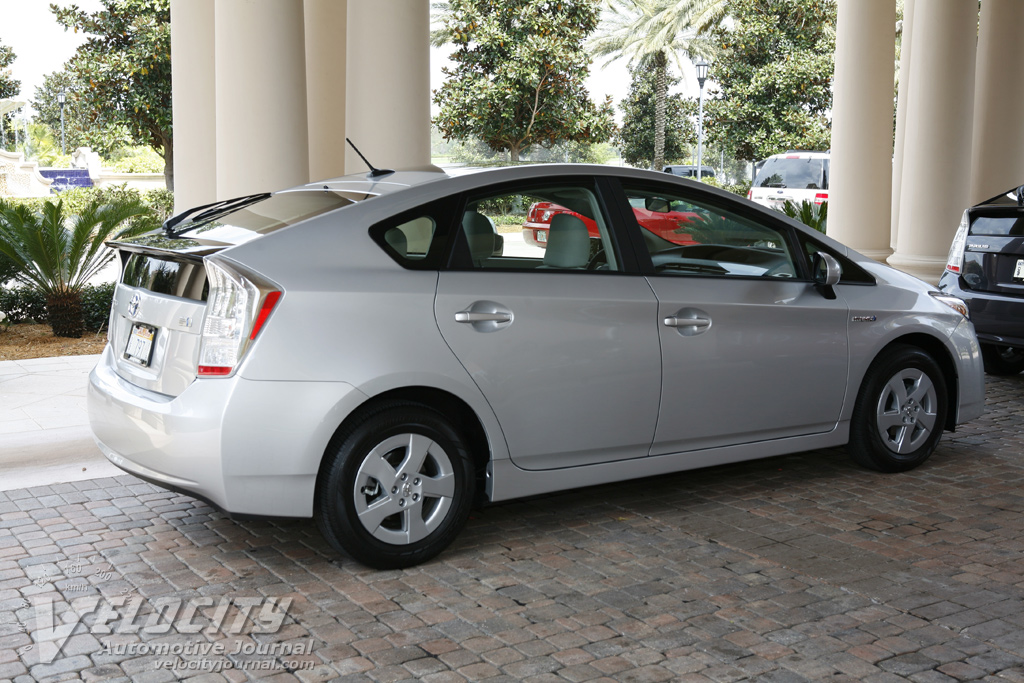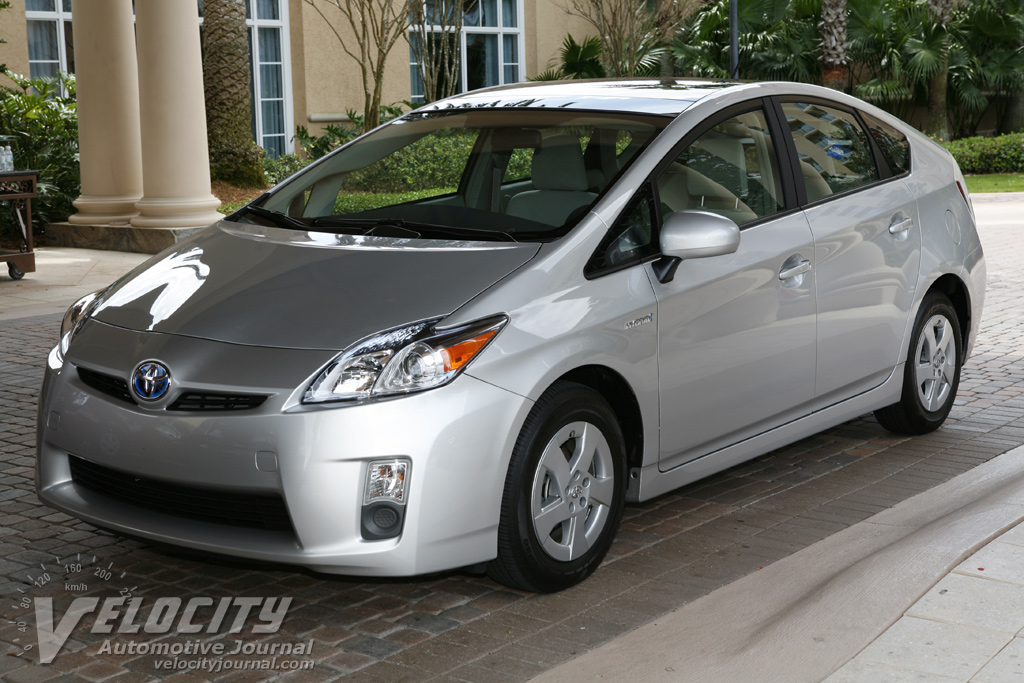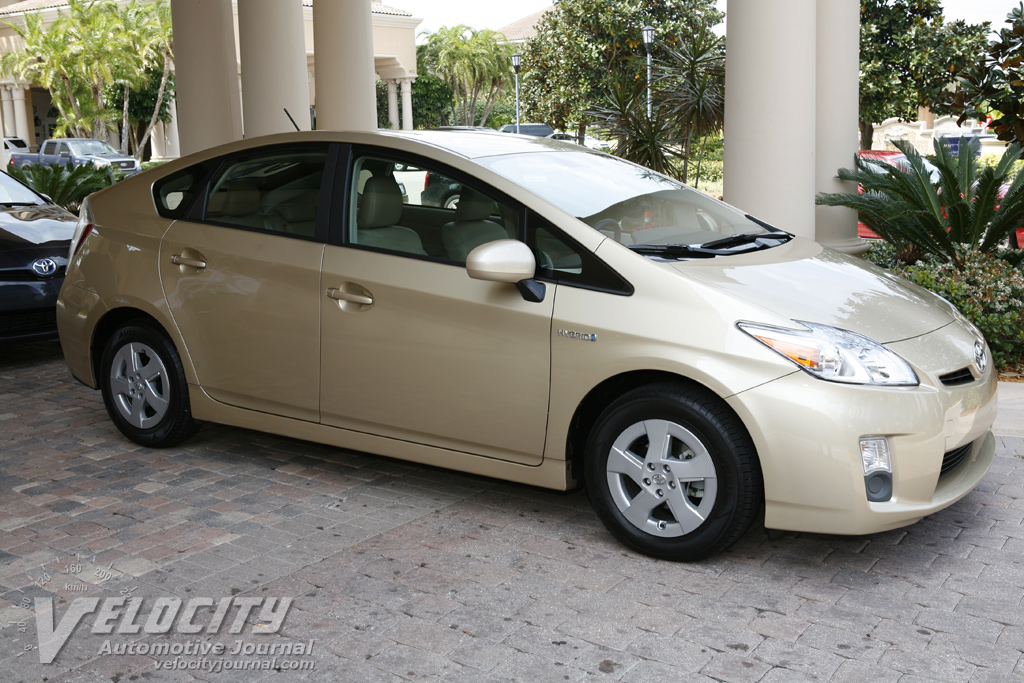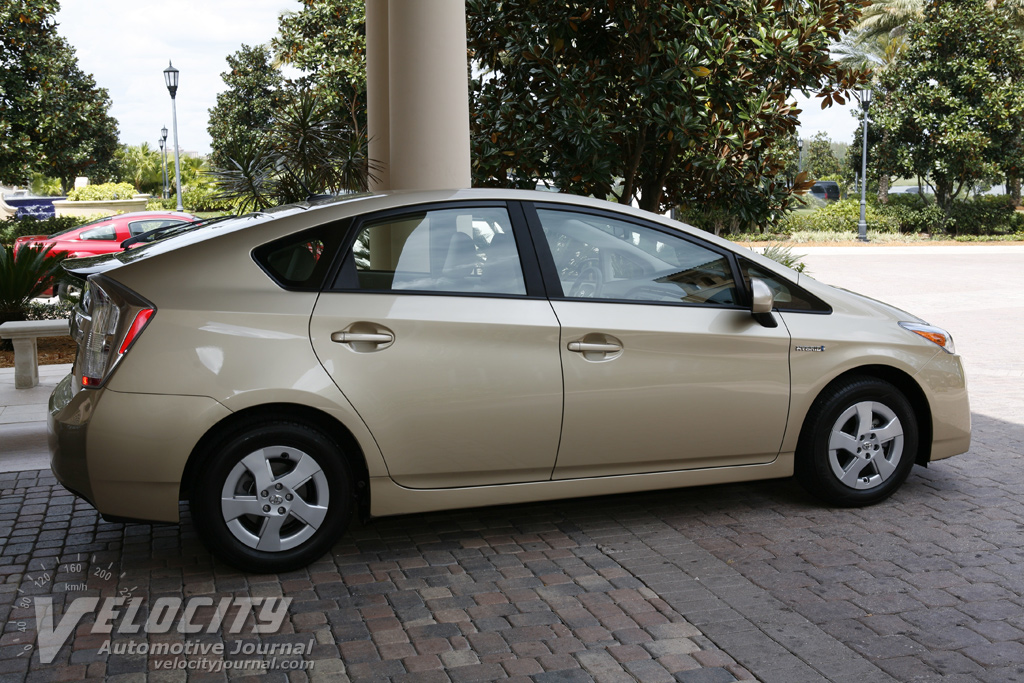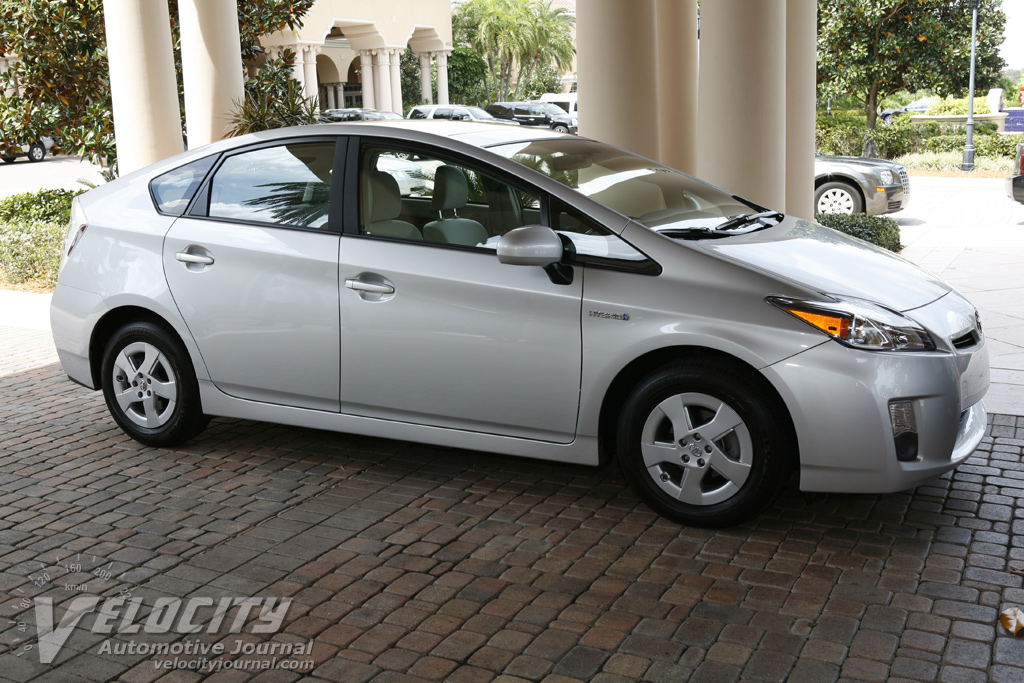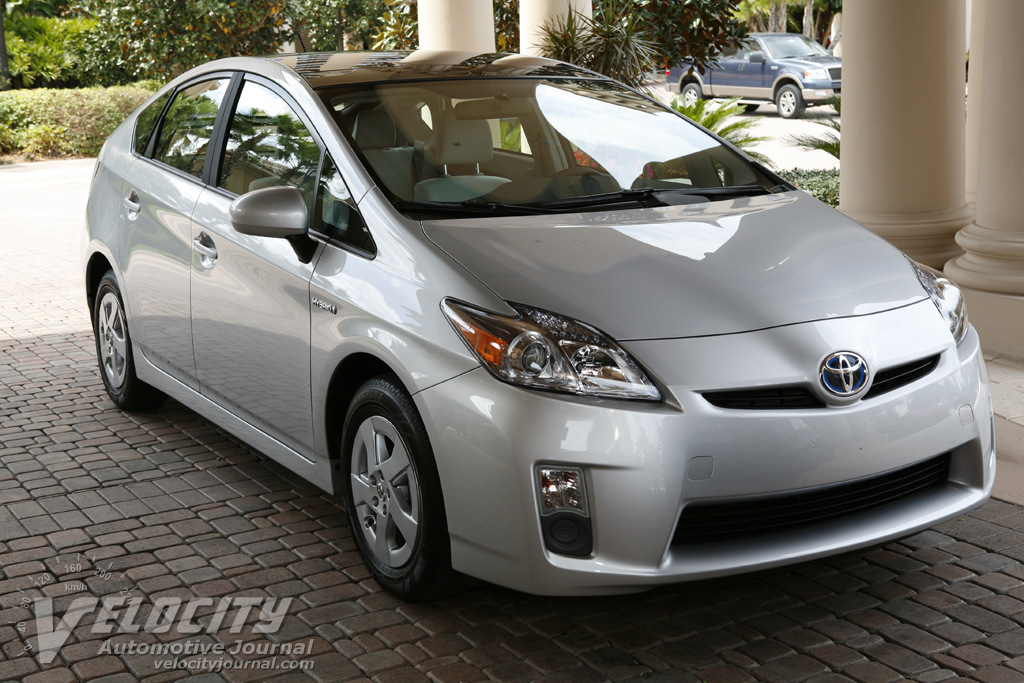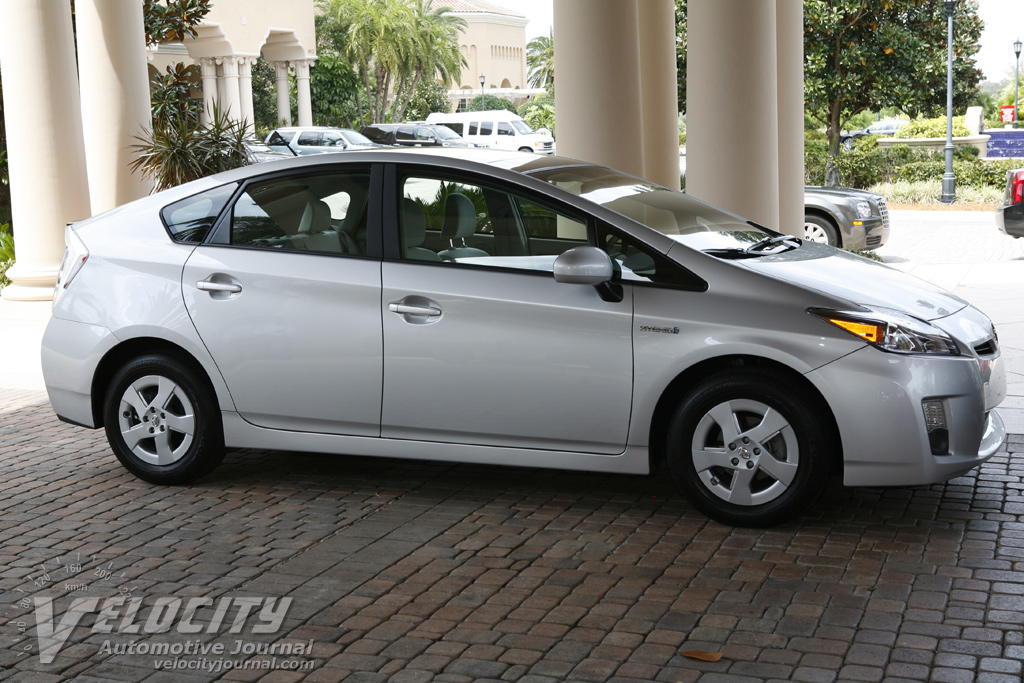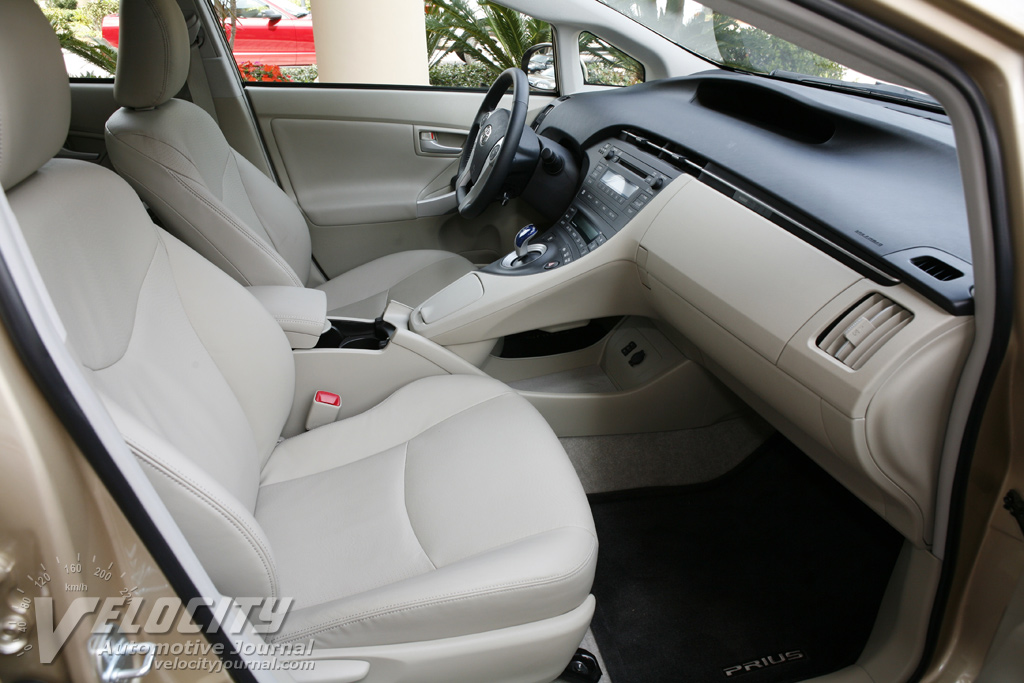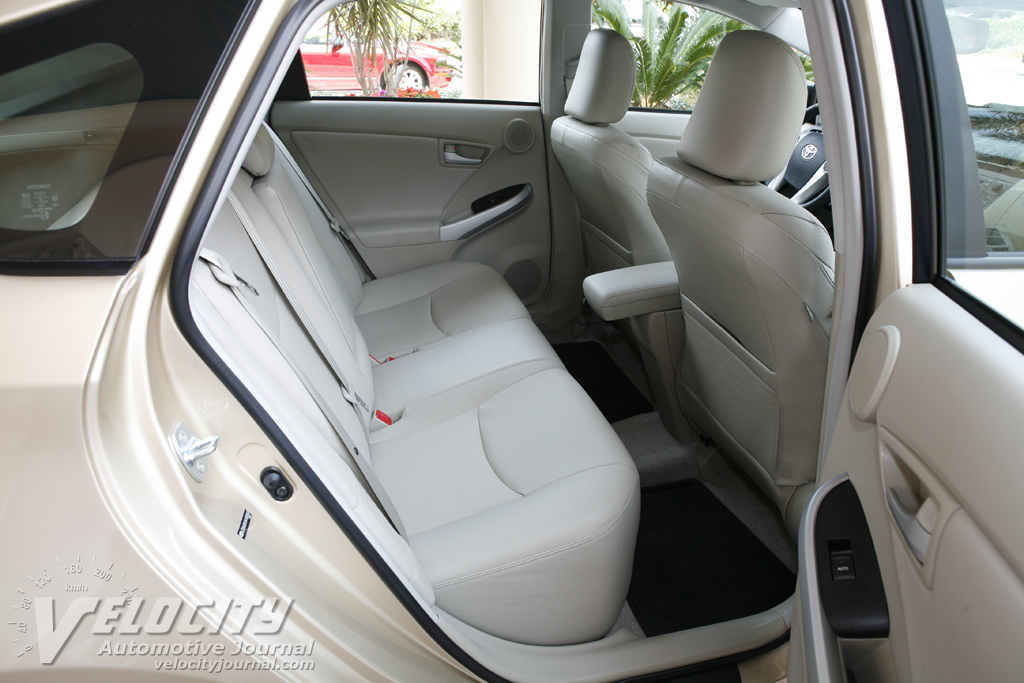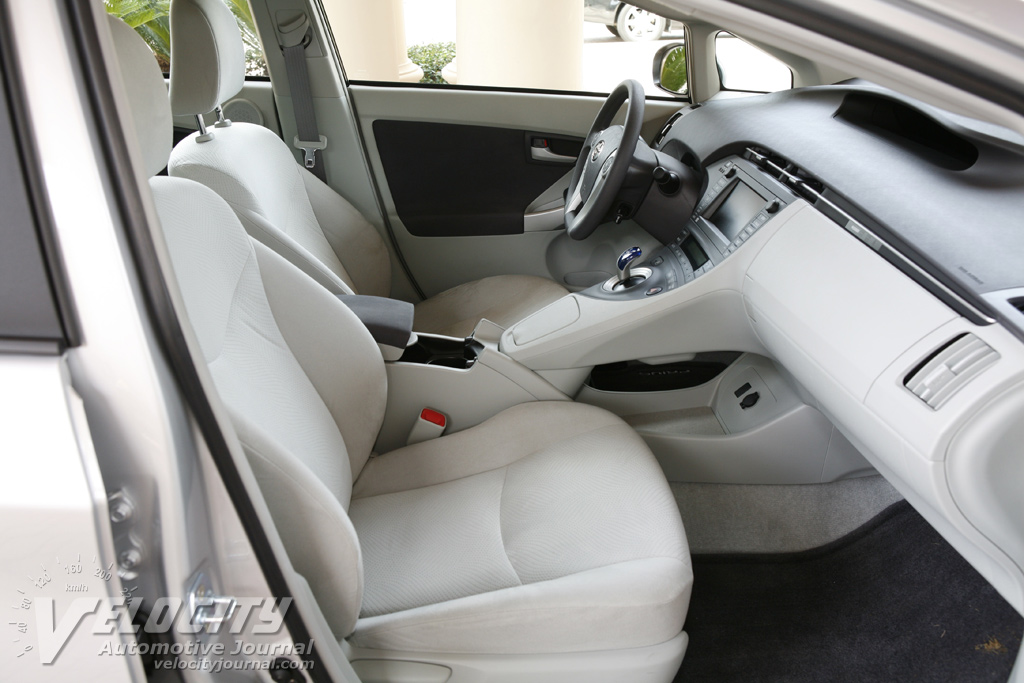2010 Toyota Prius
03/26/2009
Shahed Hussain
From a nearly unnoticed addition to Toyota's US lineup in 2000, the Prius slowly gained sales until it became synonymous with hybrid cars. Competitors such as Honda had hybrids such as the first-generation Insight, but the Prius managed to capture more sales, partly due to its greater practicality: it could haul four passengers, while the Insight was a two-seater only. Although other manufacturers have added hybrids across their product range, Toyota remains the acknowledged technology leader, due to extensive research and development that dates back to 1997, with the introduction of first Prius in Japan.
Toyota separated the 2010 Prius into four trim levels, with various option packages available depending on the model. The Prius II is the base model, followed by the Prius III, which adds a JBL audio system and Bluetooth wireless connectivity; the next step up is the well-equipped Prius IV with leather upholstery and heated front seats. In addition to the standard features on Prius IV, the top Prius V adds 17-inch alloy wheels, plus LED headlamps and fog lamps. Options consist of a Navigation Package (available on Prius III, Prius IV, Prius V), Solar Roof Package (available Prius III and Prius IV), and Advanced Technology Package (Prius V only). Pricing for the Prius should be available by May 2009.
To appeal to a wider audience, Prius option packages are aimed at customers with differing needs. The Navigation Package adds an 8-speaker JBL audio system with XM satellite radio, Bluetooth wireless technology, and a backup camera which shares the LCD touch-screen with the DVD-based navigation system. Customers in warm climates should consider the Solar Roof Package, which includes a moonroof and roof-mounted photovoltaic cells. The solar powered ventilation system circulates outside air to reduce interior temperature, or alternatively, a key fob button can run the air conditioning system for up to three minutes or until the door is opened. The Advanced Technology Package adopts some of the newest safety features such as Pre-Collision System (pre-tensions the seat belts and activates brake assist) Dynamic Radar Cruise Control, Lane Keep Assist (recognizes lane markings and provides steering assist), and Intelligent Park Assist (semi-automates parking maneuvers).
The core technology of the Prius is its hybrid powertrain, and Toyota spent considerable engineering resources to achieve class-leading fuel economy. A new 1.8L inline-4 Atkinson-cycle engine (2ZR-FXE) is rated at 98-bhp @ 5,200 RPM and 105 lb.-ft. @ 4,000 RPM; the DOHC 16-valve unit includes VVT-i (Variable Valve Timing with intelligence). Toyota's hybrid transaxle uses a dual planetary reduction gear set to integrate the two motor generators (MG1 and MG2) with the internal combustion engine. MG1 is a permanent magnet motor generator rated at 42 kW, while the bigger 60 kW MG2 produces 153 lb.-ft. of torque and spins to 13,500 RPM; the combined hybrid powertrain produces 134 peak horsepower, sent to the front wheels via an electronically controlled CVT (Continuously Variable Transmission).
Powering the dual electric motor generators is a 201.6V DC NiMH (Nickel-Metal Hydride) battery pack, composed of 28 individual 9.6V modules (a total of 168 x 1.2V cells) with a combined 6.5Ah capacity; maximum power output is 27 kW. The battery pack DC voltage jumps to 650V before an inverter converts it to 3-phase AC for the MG1 and MG2 motor generators. A DC/DC converter provides 12V DC for electrical accessories power and for the auxiliary battery. The recyclable battery pack is warranted for 10 years/150,000 miles.
During the design process, Toyota looked for every opportunity to reduce fuel consumption. For instance, to minimize parasitic losses on the gasoline engine, the air conditioning compressor, power steering, and water pump are electrically driven, eliminating accessory drive belts. Exhaust gas recirculation raises coolant temperature quickly, so the engine reaches operating temperature faster, improving efficiency. The battery pack can heat or cool the passenger compartment for short periods, reducing fuel burned from engine idling. Standard LED tail lamps and optional LED headlights use fewer watts than conventional incandescent bulbs. The redesigned body contributes to a Cd of only 0.25, a notch below the 0.26 Cd achieved by the previous model. An aluminum hood, hatch, front suspension components, and brake calipers shave excess vehicle weight.
Toyota made no radical changes to the interior, but current owners will notice higher quality materials and a more stylish layout. Overall build quality and panel fits are exceptional, even though these were pre-production vehicles. Prius II and III models get textured cloth seats, but the premium Prius IV and V include leather upholstery as standard, plus heated front seats with driver lumbar support. Both cloth and leather seats are comfortable, with adequate thigh and torso bolsters, but we preferred the leather seats because of the adjustable lumbar support. Dual cupholders are located between the front seats, with additional drink holders in the door pockets. A storage bin with a 12V power outlet sits below the center console. Rear seats passengers benefit from adequate legroom and headroom, but occupants taller than 6-ft. height will brush the headliner. The 60/40 split rear seats fold down for additional cargo space, accessible via the rear hatch.
The Prius carries on the tradition of a central instrument display, instead of the conventional gauge cluster ahead of the driver. The 4-spoke steering wheel has buttons for audio, climate control, Bluetooth phone, and trip computer functions; pressing one of the buttons immediately summons an identical graphic superimposed on the dashboard multi-function screen. The green fluorescent display shows vehicle speed, fuel consumption, and a hybrid powertrain status bar graph. Below the rectangular vents on the center stack is the LCD screen that does double duty for the navigation and JBL audio systems. Most commonly used functions have dedicated buttons surrounding the LCD, but many navigation system settings require tapping the touch screen. During our mostly urban driving around Orlando we found that the DVD-based navigation system lacked the map detail level we expected, especially compared to other hard disk-based systems. Prius models without the optional navigation system substitute a single-slot JBL AM/FM/CD audio system instead.
To start the Prius, press the round power button to the right of the steering wheel. A stubby transmission knob poking out of the center console controls the continuously variable transmission. Reverse, neutral, and drive modes are selected by sliding the knob through the "H"-shaped shift gates. Console-mounted pushbuttons select EV, Eco, Power modes. Choose EV mode and the Prius glides away from a stop on pure electric power up to 25 MPH for 0.5 miles or longer, depending on the battery charge level; only the MG2 motor generator is used in EV mode. Once the battery discharges, the gasoline engine takes over automatically to drive the Prius. Economy minded customers will probably keep the Prius in Eco mode, which maximizes gas mileage by smoothing out and reducing throttle response up to 11.6%. Eco mode also changes air conditioning operation to reduce fuel consumption. To extract the best performance from the hybrid powertrain, select the Power mode: the increased midrange throttle response enables the Prius to easily keep pace with city traffic. We experimented with all three powertrain settings, and consider the Power mode essential for urban driving. Eco mode is best suited for highway cruising, as the Prius feels sluggish around town because of its leisurely throttle response. Drivers accustomed to conventional compact sedans may find the Eco mode just too lethargic to be tolerable, although full throttle acceleration will switch the drivetrain into Power mode. For short distances and low speeds, the EV mode is acceptable, but isn't really practical in most traffic conditions. Although performance is rarely a priority for hybrid buyers, Toyota claims that the Prius will accelerate from 0-60 MPH in 9.8 seconds, with a top speed of 112 MPH.
Toyota's MC platform underpins the new Prius, providing superior torsional stiffness and a wider track than the outgoing model. The front suspension consists of MacPherson struts, lower L-shaped arms, aluminum knuckle, and a hollow aluminum stabilizer bar; at the rear is a torsion beam axle, with coil spring and dampers. Low-rolling resistance Bridgestone Ecopia P195/65R15 tires are standard on most Prius models; the sporty Prius V is shod with P215/45R17 Michelin Pilot HX MXM tires on 17-inch alloy wheels. For optimum fuel consumption the Bridgestone tires are the best bet, but handling suffers from significant understeer and the suspension feels underdamped; the chassis wallows unsettlingly over bumps and undulations. In contrast, the 45-series Michelin Pilots transform the Prius, endowing it with sharper turn-in response, flatter cornering, and overall superior handling, but at the expense of a significantly stiffer ride. The Michelins and 17-inch wheels would be our choice, but this combination is only available on the top Prius V.
Replacing the previous disc/drum setup is a 4-wheel disc brake system with lightweight aluminum calipers, vented 10.1-inch diameter rotors (front), and 10.2-inch diameter solid rotors (rear). Standard safety systems include ABS, Brake Assist, VSC (Vehicle Stability Control), and TRAC (traction control). A new Hill-start Assist Control prevents the Prius from rolling back inadvertently; the system will "beep" to confirm operation when the driver presses the brake. For maximum efficiency, the regenerative braking system recoups vehicle rotational energy into electricity to recharge the battery. The innovative brake-by-wire system invisibly switches between the conventional and regenerative brakes; we could never detect when the regenerative system was functioning. Brake pedal feel was slightly spongy, but comparable with other midsize sedans.
As is increasingly common, the Prius uses an electrically-assisted steering system for reduced power consumption and maintenance (no hoses, hydraulic fluid, pumps, etc.). The rack-and-pinion steering accurately telegraphs road textures to the driver, but steering effort at low speeds is higher than one might expect. Power assist is oddly linear, so increasing steering wheel lock doesn't result in added effort, similar to driving a car in a video game.
A hybrid vehicle encourages frugal driving habits, so we tried to minimize fuel consumption in typical urban roads and highways. Unlike some hypermilers, our goal was to achieve realistic mileage numbers without impeding traffic, so we drove at the speed limit whenever possible. We surpassed the EPA fuel economy estimates of 51/48 MPG (city/hwy.) with the Prius in Eco mode, achieving 60-63 MPG on city streets, and between 51 and 53 MPG at 65-70 MPH on the highway. Toyota did not use the available Eco mode to get the official fuel economy ratings, so most customers should be able to exceed the EPA numbers.
As the first mass market hybrid vehicle, the Prius carries the burden of high expectations from its loyal customer base, as well as being the target for other manufacturers entering this segment. Toyota fully understands it must continually push the technological envelope with the Prius, because competition from alternatives like the Honda Insight, or even the upcoming Chevrolet Volt will soon vie for the same environmentally conscious demographic that feeds current Prius sales. Toyota's long term approach has paid dividends, establishing the Prius as the best-selling hybrid vehicle in the US. However, the comprehensive redesign of the 2010 Prius demonstrates that Toyota has no intention of relinquishing its leadership position as the leader in hybrid vehicles.

